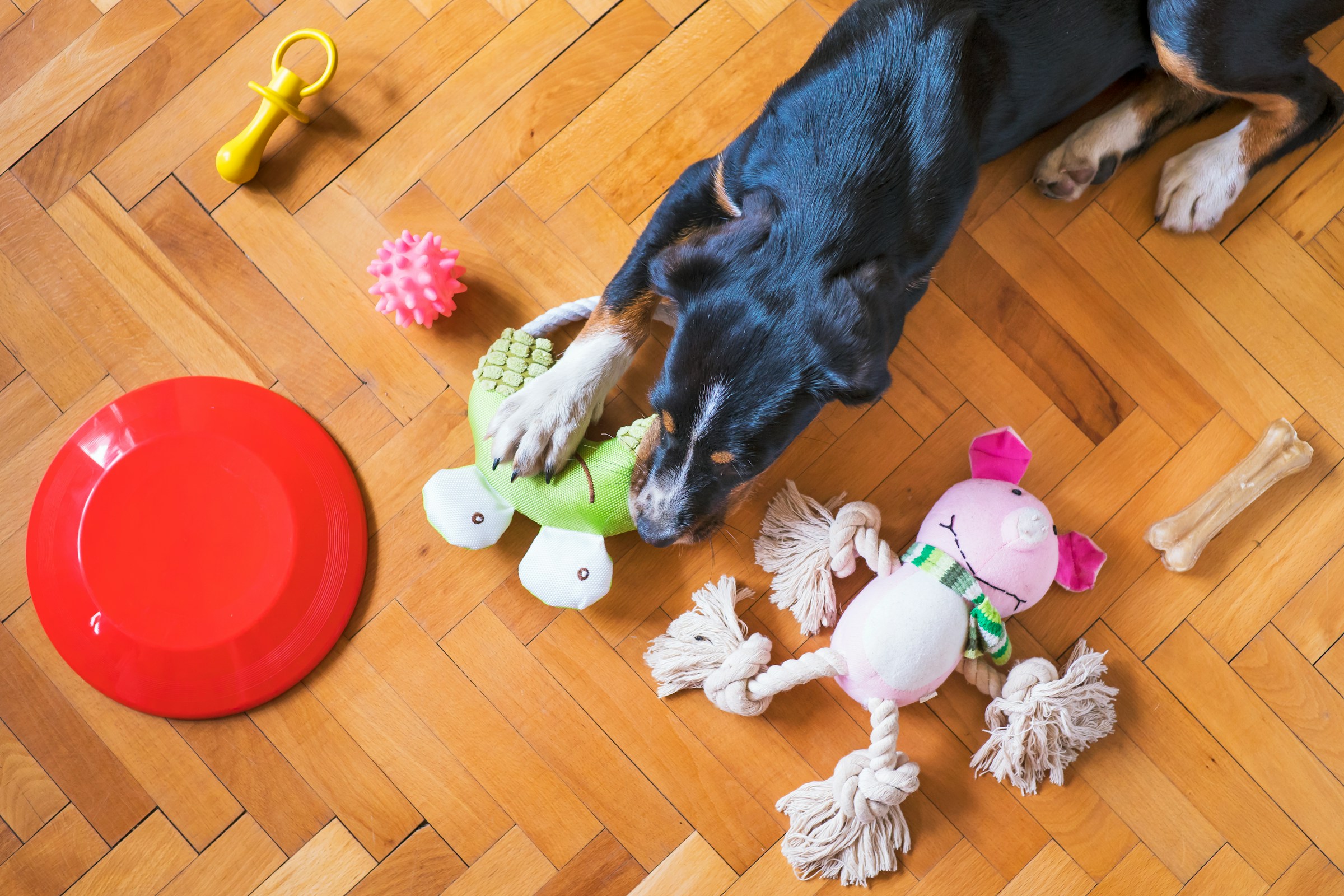Hello, pet parents! I’m Jordan Lee, your favorite pet groomer, and I’m excited to share advice on selecting safe toys for your furry friends. My golden retriever, spaniel, British short-hair, Persian cat, hamster, and African Grey parrot keep my home bustling, and I’ve figured out which toys spark joy without danger.
My golden retriever chomps on his rubber bone daily, but my Persian cat once got caught in a feather toy, showing me the importance of safety checks. At my grooming salon, I help clients choose toys that entertain pets safely, and I’m passing those insights to you.
Toys boost your pet’s happiness and health, much like consistent care, as I explore in my DeiMoi guide on regular grooming benefits. This article covers why toy safety matters, key features to look for, and tips for picking the right toys for your dog or cat, drawn from my hands-on experience. I’ll also link to DeiMoi articles, such as grooming tips for older cats, and reliable sources. Let’s ensure your pet’s playtime is fun and secure!
Why safe toys matter
Toys keep pets active and content, but risky ones can lead to trouble. Here’s why safe choices are vital:
- Prevents injuries.l Small parts or jagged edges can harm pets. My spaniel chewed a toy with loose bits once, so I swapped it out fast.
- Avoids toxic materials. Harmful chemicals in some toys can sicken pets. I check labels for my golden retriever’s toys every time.
- Reduces stress. A good toy calms nervous pets, like my Persian cat with her treat-dispensing ball. My DeiMoi guide on smart collars for pet monitoring covers stress tracking tools.
- Promotes health. Toys support exercise and oral health, as I mention in my DeiMoi article on dog dental care at home.
What to look for in pet toys
Choosing safe toys means examining specific traits. Here’s my checklist for my pets:
- Durable materials. Pick toys that resist chewing, like rubber for my golden retriever or tough fabric for my British short-hair.
- Non-toxic. Toys must be free of BPA, phthalates, or lead. I review labels for my spaniel’s toys.
- Size-appropriate. Toys should be too large to swallow. My Persian cat plays with bigger balls to avoid risks.
- No small parts. Steer clear of detachable pieces, like buttons or strings, which my hamster might nibble.
- Washable. Cleanable toys prevent germ buildup. I wash my dogs’ toys weekly, akin to practices in my DeiMoi guide on preventing dog skin issues.
The U.S. Food and Drug Administration (FDA) Center for Veterinary Medicine provides advice on pet product safety, including guidelines for choosing safe pet toys.
How to choose the right toy
Finding toys that suit your pet’s preferences ensures safe enjoyment. Here’s how I select for my pets:
Consider your pet’s size and strength
Big dogs like my golden retriever need rugged toys, such as rubber bones, while tiny cats like my British short-hair prefer light toy mice. Flimsy toys can break, as I discovered with my spaniel’s torn stuffed toy. For older pets, softer toys work better, as I note in my DeiMoi guide on senior dog behavior challenges.
Match the toy to their play style
Chewers like my golden retriever need sturdy chew toys, while my Persian cat enjoys treat-dispensing toys that spark her hunting instincts. My spaniel loves chasing balls, but I pick ones too big to swallow. For cats that scratch, a scratching post protects your couch.
Test for safety
Check toys for rough edges or loose parts before use. I pull on my dogs’ toys to test strength. Wash new toys to clear manufacturing residues. If a toy wears out, replace it—my hamster’s chew stick split once, and I got a new one right away. For health issues, reach out to a vet, as I discuss in my DeiMoi guide on remote vet consultations.
Introduce toys gradually
Offer one toy at a time to keep your pet comfortable. My British short-hair took a few days to enjoy a new toy mouse. Watch playtime closely, especially with string toys, which once snagged my Persian cat. Switch toys weekly to maintain interest, a habit I use with my African Grey’s playthings.
Tips for safe toy use
Here are my trusted tips from years of pet care:
- Supervise play: Monitor chewing or tearing, particularly with new toys for my golden retriever.
- Clean regularly: Wash toys with pet-safe soap to stop germs, as I do with my spaniel’s balls.
- Check for wear: Swap out damaged toys to avoid choking hazards. I look over my Persian cat’s toys weekly.
- Balance activity: Combine toys with a nutritious diet, as in my DeiMoi guide on adding fiber to dog diets.
- Seek vet advice: If toys cause harm, consult a vet. My DeiMoi article on AI in vet diagnostics highlights vet tech solutions.
Types of safe toys
Here are toys I suggest for dogs and cats:
- Chew toys. Rubber or nylon bones for dogs like my spaniel, offering dental benefits.
- Puzzle toys. Treat-dispensing toys for cats like my Persian or clever dogs. My African Grey enjoys similar brain teasers.
- Balls. Tennis or rubber balls for fetch-happy dogs like my golden retriever, sized correctly.
- Scratching posts. Must-haves for cats like my British short-hair to save furniture.
- Plush toys. Stuffing-free versions for safety, which my spaniel loves.
The American Society for the Prevention of Cruelty to Animals (ASPCA) offers tips on safe pet enrichment, including toy selection advice.
Special considerations
- Puppies and kittens. Young pets need softer, smaller toys. My hamster’s chew sticks are size-specific.
- Older pets. Seniors like my golden retriever favor low-effort toys, as I cover in my DeiMoi guide on senior dog behavior challenges.
- Cats vs. dogs. Cats like my Persian thrive with hunting-style toys, while dogs like my spaniel prefer fetch. Check my DeiMoi article on cat feeding guidelines for cat care tips.
- Aggressive chewers. My golden retriever needs ultra-durable toys to prevent damage.
When to see a vet
If your pet swallows a toy piece, shows choking signs, or gets hurt, contact a vet at once. My spaniel choked on a toy fragment once, and a swift vet visit made all the difference. For nail care during play, see my DeiMoi guide on safe dog nail trimming. Ongoing issues may require diagnostics.

I’m a certified pet groomer with five years of experience, passionate about helping pet owners keep their furry friends happy and healthy. I run a bustling grooming salon where I work with dogs, cats, and even the occasional small pet, offering practical advice based on hands-on expertise. My home is a lively pet haven, shared with a golden retriever, a spaniel, a British short-hair, a Persian cat, a hamster, and an African Grey parrot—each teaching me something new about pet care daily.
